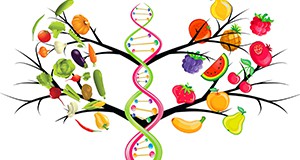 Biosolids are the liquid, semisolid, and solid fractions of the treated waste stream from a domestic wastewater treatment facility (WWTF). On August 29, 2010, the Florida Department of Environmental Protection (FDEP) formally adopted its rule for the management of wastewater biosolids, Chapter 62-640, Florida Administrative Code (F.A.C. 2010). This 6-page fact sheet from the Florida Biosolids series covers applicability of the rule, the intent of Chapter 62-640, F.A.C., land application requirements, biosolids storage, cumulative application limits, setback distances, pH, soil depth, runoff prevention, additional application site restrictions for Class B biosolids, NMPs, and special geographic areas. Written by John Hallas, Cheryl L. Mackowiak, and Ann C. Wilkie, and published by the UF Department of Soil and Water Science, October 2015.
Biosolids are the liquid, semisolid, and solid fractions of the treated waste stream from a domestic wastewater treatment facility (WWTF). On August 29, 2010, the Florida Department of Environmental Protection (FDEP) formally adopted its rule for the management of wastewater biosolids, Chapter 62-640, Florida Administrative Code (F.A.C. 2010). This 6-page fact sheet from the Florida Biosolids series covers applicability of the rule, the intent of Chapter 62-640, F.A.C., land application requirements, biosolids storage, cumulative application limits, setback distances, pH, soil depth, runoff prevention, additional application site restrictions for Class B biosolids, NMPs, and special geographic areas. Written by John Hallas, Cheryl L. Mackowiak, and Ann C. Wilkie, and published by the UF Department of Soil and Water Science, October 2015.
http://edis.ifas.ufl.edu/ss634
Category: Crops
Practices to Minimize Flooding Damage to Commercial Vegetable Production
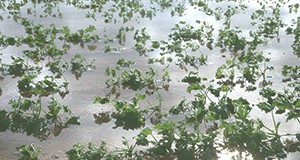
Flooding is a major risk for commercial vegetable production in south Florida, especially in the south Dade County area. Flooding causes oxygen deficiency, or hypoxic stress, causing the plants to produce less energy. This shortage in energy prevents the absorption of nutrients like nitrogen, phosphorous, and potassium. This four-page fact sheet discusses several different management practices for overcoming flood damage, including the use of nitrogen and potassium fertilizers, oxygen fertilizers, growth regulators, and fungicides. Written by Goudong Liu, Yuncong Li, and Xiangju Fu, and published by the Soil and Water Science Department.
http://edis.ifas.ufl.edu/ss425
Spotted Wing Drosophila Drosophila suzukii Identification, Ecology, and Management
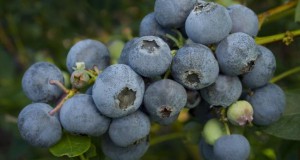 Spotted wing drosophila (SWD) is a tiny invasive fruit fly pest of small fruits. It has been found infesting fruits in Europe and North and South America. Since its first capture in California in 2008, SWD has established populations throughout the United States in over 47 states. This trifold brochure written by Lindsy Iglesias, Teresia W. Nyoike, and Oscar E. Liburd and published by the Entomology and Nematology Department describes how to identify and monitor these tiny pests and explains a few strategies to control them and limit the damage they cause to fruit crops.
Spotted wing drosophila (SWD) is a tiny invasive fruit fly pest of small fruits. It has been found infesting fruits in Europe and North and South America. Since its first capture in California in 2008, SWD has established populations throughout the United States in over 47 states. This trifold brochure written by Lindsy Iglesias, Teresia W. Nyoike, and Oscar E. Liburd and published by the Entomology and Nematology Department describes how to identify and monitor these tiny pests and explains a few strategies to control them and limit the damage they cause to fruit crops.
http://edis.ifas.ufl.edu/in1098
Implementing the Four Rs (4Rs) in Nutrient Stewardship for Tomato Production
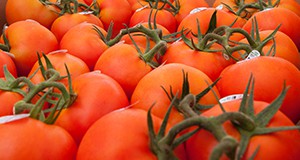 Fertilization plays a critical role in tomato production across the state of Florida. However, appropriate fertilization management depends on four major components (4Rs): right source, right rate, right placement, and right timing. Farming practices that follow the 4Rs can provide nutrients for optimal tomato productivity while minimizing the risk of nutrient losses and adverse environmental effects, both of which are important to the development of agricultural sustainability. This 6-page fact sheet discusses the 4Rs as well as conventional dry source fertilizers, controlled-release or slow-release source fertilizers, and liquid source fertilizers. Written by Qingren Wang, Guodong Liu, Kelly Morgan, and Yuncong Li, and published by the UF Department of Horticultural Sciences, October 2015.
Fertilization plays a critical role in tomato production across the state of Florida. However, appropriate fertilization management depends on four major components (4Rs): right source, right rate, right placement, and right timing. Farming practices that follow the 4Rs can provide nutrients for optimal tomato productivity while minimizing the risk of nutrient losses and adverse environmental effects, both of which are important to the development of agricultural sustainability. This 6-page fact sheet discusses the 4Rs as well as conventional dry source fertilizers, controlled-release or slow-release source fertilizers, and liquid source fertilizers. Written by Qingren Wang, Guodong Liu, Kelly Morgan, and Yuncong Li, and published by the UF Department of Horticultural Sciences, October 2015.
http://edis.ifas.ufl.edu/hs1269
Bitter Melon: An Asian Vegetable Emerging in Florida
 Bitter melon is a tropical and subtropical vegetable crop with long climbing vines which is widely cultivated in Asia, Africa, and the Caribbean. The unripe fruit is used as a vegetable with a pleasantly bitter taste. This 7-page fact sheet provides an overview of this plant as well as recommendations for individuals in Florida who are interested in growing it. Written by Guodong Liu, Qingren Wang, Yuncong Li, David Dinkins, Bonnie Wells, and Yuqi Cui, and published by the UF Department of Horticultural Sciences, December 2015.
Bitter melon is a tropical and subtropical vegetable crop with long climbing vines which is widely cultivated in Asia, Africa, and the Caribbean. The unripe fruit is used as a vegetable with a pleasantly bitter taste. This 7-page fact sheet provides an overview of this plant as well as recommendations for individuals in Florida who are interested in growing it. Written by Guodong Liu, Qingren Wang, Yuncong Li, David Dinkins, Bonnie Wells, and Yuqi Cui, and published by the UF Department of Horticultural Sciences, December 2015.
http://edis.ifas.ufl.edu/hs1271
Tomato Cultivar Selection Considerations for Open-Field and Protected Culture in North Florida
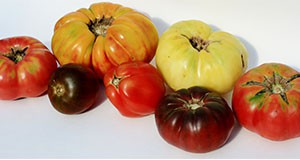
Tomatoes represent one of the most popular vegetables grown in protected culture such as greenhouses, high tunnels, or shade houses. Selecting the correct cultivar of tomato is critical and varies depending on the intended season, type of protected structure, training system, expected insect and disease pressure, post-harvest handling techniques, and intended market. This seven-page fact sheet will focus on the key factors affecting the cultivar selection decisions for growing and selling tomatoes in north Florida. Written by Blake R. Thaxton and Robert C. Hochmuth, and published by the Horticultural Sciences Department.
http://edis.ifas.ufl.edu/hs1273
Long Squash: An Asian Vegetable Emerging in Florida
 Long squash is an annual, vigorous, and herbaceous crop that was brought to the Americas by Paleoindian populations from Asia before the arrival of Columbus. This 4-page fact sheet provides an overview of this plant as well as recommendations for individuals in Florida who are interested in growing it. Written by Guodong Liu, Yuncong Li, David Dinkins, Bonnie Wells, Qingren Wang, and Yuqi Cui, and published by the UF Department of Horticultural Sciences, December 2015.
Long squash is an annual, vigorous, and herbaceous crop that was brought to the Americas by Paleoindian populations from Asia before the arrival of Columbus. This 4-page fact sheet provides an overview of this plant as well as recommendations for individuals in Florida who are interested in growing it. Written by Guodong Liu, Yuncong Li, David Dinkins, Bonnie Wells, Qingren Wang, and Yuqi Cui, and published by the UF Department of Horticultural Sciences, December 2015.
http://edis.ifas.ufl.edu/hs1272
Long Bean: An Asian Vegetable Emerging in Florida
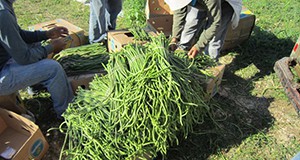 Food diversity, nutritional food supply, and profitability are the priorities of agricultural and horticultural industries. To diversify vegetable products and increase the Florida vegetable industry's competitiveness, a number of new vegetable crops are rapidly emerging in the state. Due to Florida's favorable climate, these vegetable crops grow well and have high market potential. The objective of this 6-page fact sheet is to provide a general overview of long bean, one of the Asian vegetable crops grown in Florida. Written by Kshitij Khatri, Guodong Liu, Qingren Wang, Yuncong Li, David Dinkins, and Bonnie Wells, and published by the UF Department of Horticultural Sciences, October 2015.
Food diversity, nutritional food supply, and profitability are the priorities of agricultural and horticultural industries. To diversify vegetable products and increase the Florida vegetable industry's competitiveness, a number of new vegetable crops are rapidly emerging in the state. Due to Florida's favorable climate, these vegetable crops grow well and have high market potential. The objective of this 6-page fact sheet is to provide a general overview of long bean, one of the Asian vegetable crops grown in Florida. Written by Kshitij Khatri, Guodong Liu, Qingren Wang, Yuncong Li, David Dinkins, and Bonnie Wells, and published by the UF Department of Horticultural Sciences, October 2015.
http://edis.ifas.ufl.edu/hs1268
Pest Identification Guide: An Introduction to Thrips
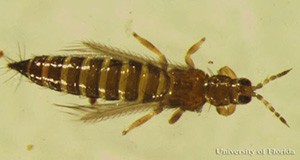 Tiny insects called thrips are difficult to see with the unaided eye but cause very obvious and sometimes ruinous damage to the flowers, buds, and fruit of many important crops. This two-page guide asks and answers the key thrips questions that allow growers to distinguish between chilli thrips, common blossom thrips, and Western flower thrips to more effectively battle against these destructive pests. What does it look like? What is its life cycle? Where is it found? What type of damage does it cause? And, most importantly, who are its natural enemies? Use this guide to help you identify thrips so that you can take effective steps to control them and limit the damage they cause. Written by Nicole Casuso and Hugh Smith with photos by Lyle Buss, Jeff Cluever, Vivek Kumar, P.M.J. Ramakers, Gary Vallad, and Hugh Smith. Published by the Entomology and Nematology Department, UF/IFAS Extension.
Tiny insects called thrips are difficult to see with the unaided eye but cause very obvious and sometimes ruinous damage to the flowers, buds, and fruit of many important crops. This two-page guide asks and answers the key thrips questions that allow growers to distinguish between chilli thrips, common blossom thrips, and Western flower thrips to more effectively battle against these destructive pests. What does it look like? What is its life cycle? Where is it found? What type of damage does it cause? And, most importantly, who are its natural enemies? Use this guide to help you identify thrips so that you can take effective steps to control them and limit the damage they cause. Written by Nicole Casuso and Hugh Smith with photos by Lyle Buss, Jeff Cluever, Vivek Kumar, P.M.J. Ramakers, Gary Vallad, and Hugh Smith. Published by the Entomology and Nematology Department, UF/IFAS Extension.
http://edis.ifas.ufl.edu/in1058
Improving the Precision of Blueberry Frost Protection Irrigation
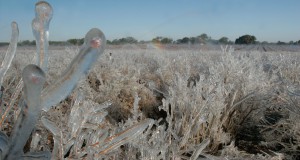
In Florida, early-ripening southern highbush blueberry cultivars allow growers to take advantage of high prices in the early market before other states can compete with higher volumes of berries sold at lower prices. That advantage comes with a vulnerability, however, because frosts can reduce gains. Florida growers rely on strategies like cold protection irrigation to reduce their risk of loss due to cold damage. This 9-page article by Tatiana Borisova, Tori Bradley, Mercy Olmstead, and Jeffrey Williamson describes a UF/IFAS study comparing precision cold protection irrigation to uniform cold protection irrigation to estimate the potential savings in diesel costs and water withdrawal volumes associated with the two practices and help protect Florida’s valuable and vulnerable blueberry harvest. Published by the Food and Resource Economics Department in November 2015.
http://edis.ifas.ufl.edu/fe979
Understanding Nitrogen Transformations and Cycling for Sweet Corn Production in Sandy Soils
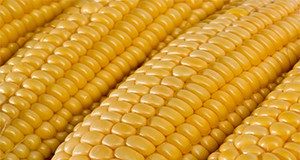 Because sandy soils have low water and nutrient-holding capacities and Florida experiences high rainfall periodically, optimizing fertilizer use efficiency for sweet corn production is challenging. The preparation of nitrogen budgets and the implementation of effective management strategies can help farmers overcome these obstacles. This 4-page fact sheet discusses major concerns which call for nitrogen management in sweet corn production, nitrogen budget preparation and interpretation, and important differences between farm-gate and soil system budgets. Written by Rishi Prasad and George Hochmuth, and published by the UF Department of Soil and Water Science, May 2015.
Because sandy soils have low water and nutrient-holding capacities and Florida experiences high rainfall periodically, optimizing fertilizer use efficiency for sweet corn production is challenging. The preparation of nitrogen budgets and the implementation of effective management strategies can help farmers overcome these obstacles. This 4-page fact sheet discusses major concerns which call for nitrogen management in sweet corn production, nitrogen budget preparation and interpretation, and important differences between farm-gate and soil system budgets. Written by Rishi Prasad and George Hochmuth, and published by the UF Department of Soil and Water Science, May 2015.
http://edis.ifas.ufl.edu/ss643
Some Common Diseases of Pepper in Florida
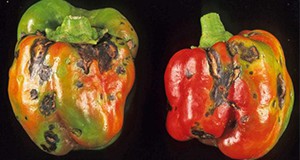
Pepper is an important commercial vegetable crop in Florida. During the months of November through May, the country is dependent on Florida for its supply of domestic fresh peppers. But disease problems often limit Florida pepper production. This fact sheet describes the symptoms and provides control recommendations for bacterial spot, phytophthora blight, wet rot, cercospora leaf spot, southern blight, blossom end rot, tobacco mosaic virus, aphid-transmitted viruses, and tomato spotted wilt virus (TSWV). Written by Gary Vallad, Pamela Roberts, Ken Pernezny, and Tom Kucharek. Originally published by the UF Department of Plant Pathology in March 1991, Revised September 2015. (Photo credit: Gerald Holmes, Bugwood.org, CC BY-NC 3.0 US). We would like to extend special thanks to professors emeriti Ken Pernezny and Tom Kucharek for interrupting their shuffleboard schedules to contribute to the revision of this publication.
http://edis.ifas.ufl.edu/vh054
Value-Added Products for Fresh Highbush Blueberries

Blueberries are one of the most popular fruits worldwide. Blueberries’ health benefits have fueled this popularity, and today, blueberries can be found in products ranging from nutritional supplements to pet food. This 4-page fact sheet covers the processing methods such as freezing or drying that transform fresh blueberries into ingredients that can be used in other products. Written by Ruiqi Li and Liwei Gu, and published by the UF Food Science and Human Nutrition Department, June 2015.
http://edis.ifas.ufl.edu/fs268
“Candidatus Liberibacter solanacearum”: An Emerging Pathogen Infecting Potato and Tomato

A bacterium called “Candidatus Liberibacter solanacearum” infects potatoes and tomatoes, causing zebra chip in potatoes and psyllid yellows in tomatoes. These disease are highly destructive and have been known to reduce yields by up to 85%. “Ca. L. solanacearum” has been reported in several states, though it has not been detected in Florida, which is the second largest producer of tomatoes and seventh largest producer of potatoes in the US. This 9-page fact sheet covers the biology, distribution, symptoms, transmission, diagnosis, and management of the pathogen and its associated diseases. Written by Binoy Babu, Mathews L. Paret, Nicholas Dufault, and Carrie L. Harmon, and published by the UF Department of Plant Pathology, August 2015.
http://edis.ifas.ufl.edu/pp320
HOT TOPIC: Oriental Fruit Fly
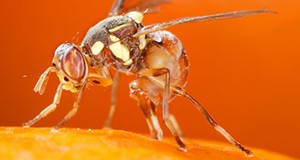
On Tuesday September 15th 2015, Florida Commissioner of Agriculture Adam H. Putnam declared a state of agricultural emergency due to the oriental fruit fly infestation in Miami-Dade County. The oriental fruit fly is considered one of the most serious of the world’s fruit fly pests due to its potential economic harm. For general information on this destructive pest of fruit, see EENY-083: Oriental Fruit Fly, Bactrocera dorsalis (Hendel) (Insecta: Diptera: Tephritidae) an informative Featured Creatures fact sheet describing the species, its distribution, life history, hosts, damage, quarantine & management, and selected references. (Photo Credit: Scott Bauer, USDA)
Also see these useful sources for news and information on the emerging threat:
Weed Management in Sesame
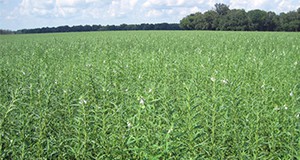 Sesame is a promising new crop for Florida, but few herbicides have been registered for it as yet. This 2-page fact sheet provides weed-control strategies for sesame. Written by Jason Ferrell and Ramon Leon, and published by the UF Department of Agronomy, June 2015. (Photo credit: Doug Mayo)
Sesame is a promising new crop for Florida, but few herbicides have been registered for it as yet. This 2-page fact sheet provides weed-control strategies for sesame. Written by Jason Ferrell and Ramon Leon, and published by the UF Department of Agronomy, June 2015. (Photo credit: Doug Mayo)
http://edis.ifas.ufl.edu/ag396
Plant Diagnostic Clinic and HLB Lab
The Plant Pathology program at the UF/IFAS Southwest Research and Education Center is the state and local resource for plant diagnostic services, including HLB (Huanglongbing, or citrus greening) detection, and for insect identification. This brochure covers the center’s history, instructions for sending samples to the HLB lab, answers to frequently asked questions, and center hours and contact information. Written by Pamela Roberts, Shea Teems, Joubert Fayette, and Jamie Burrow, and published by the UF Department of Plant Pathology, July 2015.
http://edis.ifas.ufl.edu/pp319
Fungal Gummosis in Peach
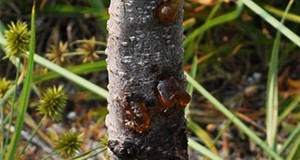
Fungal gummosis in peach occurs when the fungus Botryosphaeria dothidea infects small openings or wounds in tree branches or trunks. The disease causes blisters on the tree that form lesions and eventually ooze gum (sap). This 3-page fact sheet covers the disease cycle and management of fungal gummosis in peach, which is often difficult to control. Written by Sara Sherman, Mercy Olmstead, Philip Harmon, and Thomas Beckman, and published by the UF Department of Horticultural Sciences, July 2015.
http://edis.ifas.ufl.edu/hs1265
Peach Rust
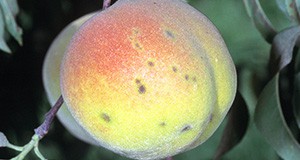
Peach rust is a fungal disease that affect the leaves and, less commonly, twigs and fruit of peach trees. The fungus that causes peach rust thrives in Florida’s humid climate and may cause significant economic losses in severely affected orchards. This 5-page fact sheet details peach rust symptoms, disease cycle, and management, including fungicide treatments. Written by Courtney Ligon, Mercy Olmstead, and Phillip Harmon, and published by the UF Department of Horticultural Sciences, June 2015.
http://edis.ifas.ufl.edu/hs1263
Black Scale Saissetia oleae (Olivier, 1791) (Insecta: Hemiptera: Coccoidea: Coccidae)
 The black scale is an important pest of citrus and olive trees. Originally from South Africa, this scale is now distributed worldwide. In Florida, black scale is found on citrus, cultivated olive, avocado, and many popular landscape plants. It is likely that black scale, like many invasive pests, was imported to the United States on infested nursery plants. Based on their small size and the unique life history of scale insects, these insects are difficult to detect and control. This 4-page fact sheet was written by Morgan A. Byron, Jennifer L. Gillett-Kaufman, and Sandra A. Allan, and published by the UF Department of Entomology and Nematology, March 2015. (Photo credit: Lyle Buss, UF/IFAS)
The black scale is an important pest of citrus and olive trees. Originally from South Africa, this scale is now distributed worldwide. In Florida, black scale is found on citrus, cultivated olive, avocado, and many popular landscape plants. It is likely that black scale, like many invasive pests, was imported to the United States on infested nursery plants. Based on their small size and the unique life history of scale insects, these insects are difficult to detect and control. This 4-page fact sheet was written by Morgan A. Byron, Jennifer L. Gillett-Kaufman, and Sandra A. Allan, and published by the UF Department of Entomology and Nematology, March 2015. (Photo credit: Lyle Buss, UF/IFAS)
http://edis.ifas.ufl.edu/in1082
